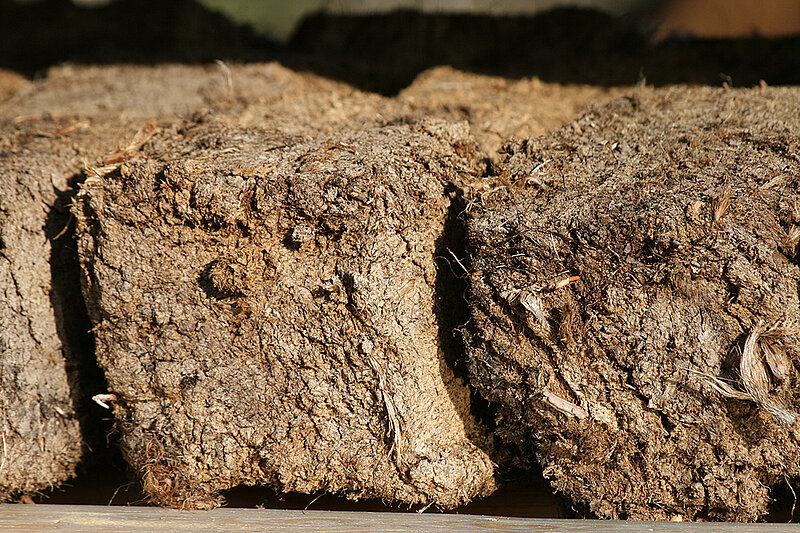The total area of fens in Latvia comprises about 6 400 km2. The present fens are Quaternary formations that have developed over the last 11 000 years at the end of the ice age. The projected peat resources of Latvia amount to 11.3 billion m3, which corresponds to approximately 1.8 billion tons of peat. In terms of peat reserves, Latvia is in second place among the Baltic states, ahead of Lithuania with 0.9 billion tons of peat. During the year, 0.7 to 1.0 million tons of peat accumulate in the territory of Latvia. Its natural accumulation rate significantly exceeds the amount of peat extraction.
Peat exploration can be an ongoing study inspecting the use of this resource, or a part of research into climate and change, as well as a study into development of civilization, since the peat layers preserve past evidence of environmental and anthropogenic changes in the area.
Specialists of the Natural Resource Research Centre of the University of Latvia have carried out peat research in fens throughout the country, developed and adapted various methods for peat research and component extraction.
It is necessary to distribute objective and substantiated point research probes and boreholes in the research area and to take peat samples in accordance with the peculiarities of peat composition and structure. Specialists of the Natural Resource Research Centre of the University of Latvia have experience in taking peat samples in fens.
Available equipment for collecting peat samples (profiles):
- Soft sediment drill
- Soft sediment probe
- Cartridges for sediment transportation
- Other equipment (GPS, field measurement equipment, etc.)
Specialists of the Natural Resource Research Centre of the University of Latvia have extensive experience in performing laboratory analyses of various types of peat. The laboratories of the centre have capacity to determine:
- Botanical composition and decomposition degree of peat
- Content of spores and pollen in peat, micro-residues and macro-residues of plants and organisms
- Natural density, moisture and dry matter of peat
- Peat environmental reaction (pH) and electrical conductivity, TDS
- Content of organic matter, mineral and carbonate particles (analysis of heating losses)
- Ash content of peat
- Elemental composition of peat and its ratios (C, H, N, S, O)
- Content of metallic and non-metallic elements in peat
- Content of microelements and macroelements in peat
- Bitumen and wax content in peat
- Content of humic substances in peat
- Total organic and inorganic carbon content in peat
- Stable C, N, O isotope composition in peat
- Peat sorption properties
- Differential thermal analysis and thermogravimetry
- Fourier transformation infrared spectroscopy
- 3D fluorescence spectroscopy and fluorescence spectroscopy
- Ultraviolet-visible spectroscopy
- Scanning electron microscopy
- Atomic absorption spectrometry
- Titrimetry
- Stable isotope mass spectrometry

 CONFERENCE
CONFERENCE